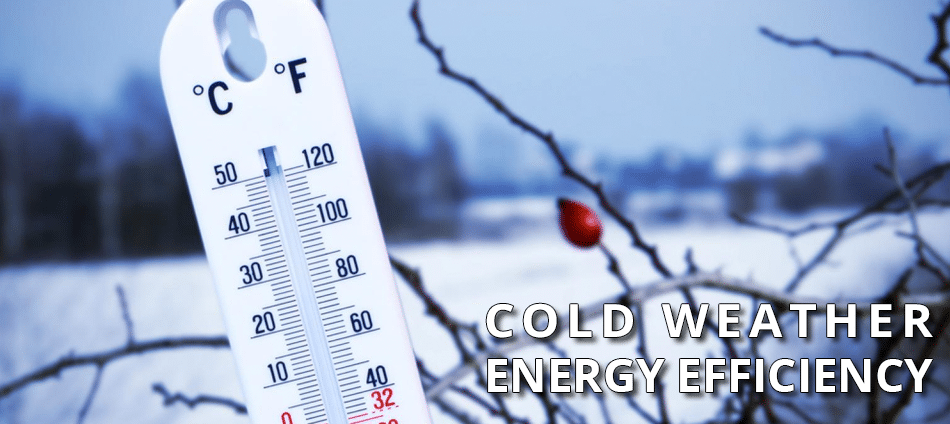18 Dec Cold Weather Energy Efficiency
Button Up Your Home for Winter Savings…'Cause Baby, It's Cold Outside

Cold Weather Energy Efficiency
Winter is an interesting season in Texas, some days it can be a beautiful 73 degrees and others can be a chilly 42 degrees with rain! With the temperate winter climate, cold weather energy efficiency isn’t always at the forefront of our minds. Similar to your winter wardrobe, your home keeps the elements out from temperature extremes, rain, snow, sun and even those overly noisy neighbors of yours. Why then do we choose to fight the cold with expensive heating bills when we can gear our homes up for winter and save?
Here’s how you can improve the energy efficiency of your home this holiday season.
 Spray foam insulation is a great option for keeping the temperature of your home comfortable. Available in open- and closed-cell options, spray foam is pumped into the walls, expanding into every crack and crevice at an incredible rate and volume, leaving the cold outside where it belongs. For this reason, spray foam is a more efficient means of insulating your home than traditional fiberglass insulation as it effectively stops air and moisture infiltration. That means your home can retain more heat on top of being more resistant to mold, but that’s not all you can do.
Spray foam insulation is a great option for keeping the temperature of your home comfortable. Available in open- and closed-cell options, spray foam is pumped into the walls, expanding into every crack and crevice at an incredible rate and volume, leaving the cold outside where it belongs. For this reason, spray foam is a more efficient means of insulating your home than traditional fiberglass insulation as it effectively stops air and moisture infiltration. That means your home can retain more heat on top of being more resistant to mold, but that’s not all you can do.
Every opening in your home from windows to doors can be an open invitation for the cold to come storming in. This can include lesser obvious penetrations in your home like dryer vents, outdoor water faucets and outlets. In some instances, it can be that small space between the front door and the floor. No different than an open window; these gaps can be just as costly. We often tell our customers that if you can fit a $100 bill through the gap in your front door, you might as well do it because that is what you will end up spending in excess heating bills this year. Instead place a piece of weather stripping at the bottom of any exterior door to keep that colder air from seeping into the house.
To further beef up the warmth of your home, install double pane windows and/or a heavier drapery during the winter months. Unlike summer though, you will want to open the drapes/blinds during daylight hours to warm up the house and close them at night to better insulate those windows. Similarly, you will want to set your ceiling fan in reverse so that it instead of pulling the hot air up, it will now pull the hot air down and keep it closer to you, where you want it.
Besides the deep energy retrofits (spray foam insulation, efficient windows and doors) to improve your home's efficiency, adapting your lifestyle for the sake of saving may also be necessary. For example, setting your thermostat to 68 degrees during the day and 55 degrees at night can help out with that costly heating bill. If you have a fireplace, keep the damper shut when not in use. Traditional fireplaces are an energy loser – it's best not to use them because they pull heated air out of the house and up the chimney. When not in use, make absolutely sure the damper is closed. Before closing the damper, make sure that you don't have any smoldering embers. If you decide not to use a fireplace, then block off the chimney with a piece of rigid insulation from the hardware store that fits snugly into the space (dampers don't shut fully without some leaking).
And lastly, not everything needs to be something you can do for your house; part of being energy-efficient in winter is how you, yourself, approach the cold in your home. If you are one to hike up the thermostat to tropic conditions in shorts and a tank top, you may want to reevaluate your attire. Try choosing clothes that suit the season regardless of whether you are indoors or outdoors – items that are not solely based on looks but by their construction and material. A tightly woven wool or wool-blend shirt can go a long way in holding in your body heat, much further than your favorite cotton shirt from college. So if you want to save this winter and be more energy efficient, dress the part and make sure your home is doing the same.

No Comments